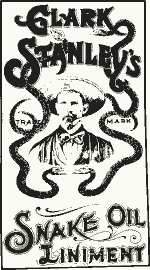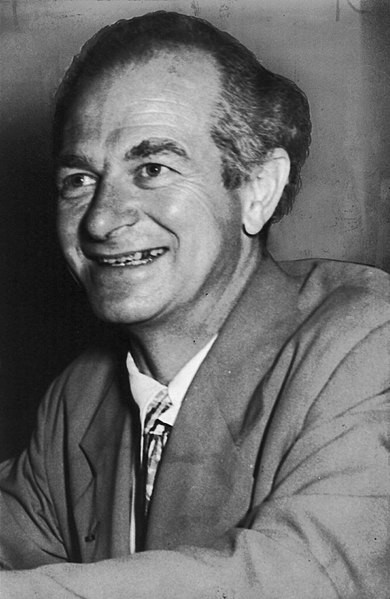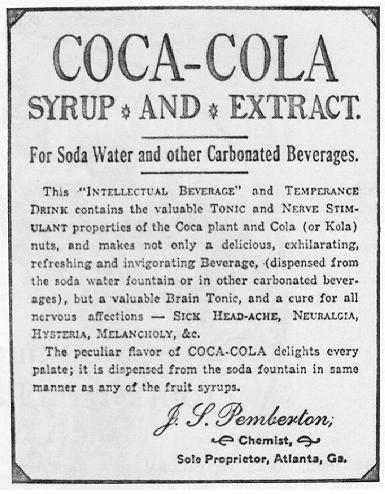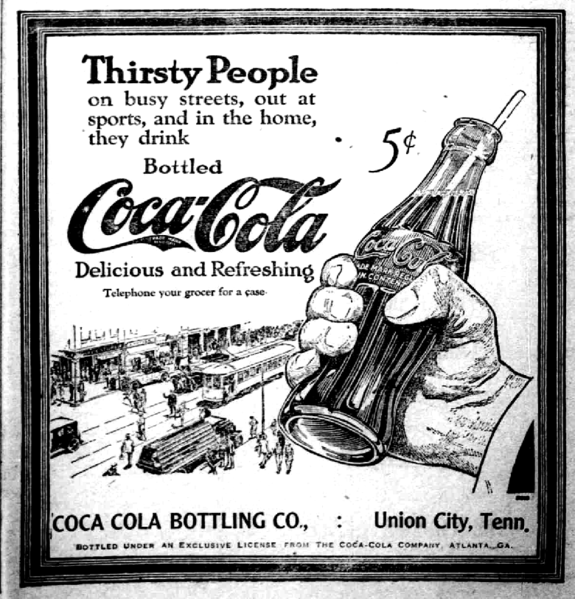Long ago, when I was squinting at old New
York newspapers on microfilm, researching the financial antics of Wall Street
speculator Daniel Drew, and the scandalous career of Madame Restell, the
abortionist, I came on full pages of ads that baffled, then intrigued me. The products advertised, both then and
throughout the century, included such items as these:
Swaim’s Panacea
Viner’s Vermifuge
Lydia E. Pinkham’s Herb Medicine
Ayer’s Cathartic Pills
Cocaine Toothache Drops
Hostetter’s Bitters
Wister’s Balsam
Pastor Koenig’s Nerve Tonic
Dr. Williams’ Pink Pills for Pale People
Such were the patent medicines of the
time, which, by the way, were anything but patented. In seventeenth-century England, elixirs that
found favor with royalty received letters patent, allowing them to use the royal
endorsement in marketing; the name “patent medicine” resulted, and stuck.
 |
 |
| Here they actually say the dread words: venereal disease. |
 |
| Yes, there really was such a thing as snake oil. |
And what did these medicines cure? Indeed, what didn’t they purport to cure? Swaim’s Panacea, the product of Swaim’s Laboratory in Philadelphia, was created in 1820 by a Professor William Swaim and claimed to heal scrofula, coxalgia (hip-joint disease), mercurial rheumatism, chronic ulcers, scrofulous ophthalmia, eczema, and poisoning of the blood. Still marketed in the 1890s, it was sometimes pictured as a stalwart Hercules clubbing the multimouthed dragon of disease.
Ayer’s Cathartic Pills, the creation of
Dr. J.C. Ayer of Lowell, Massachusetts, was a “safe, pleasant and reliable
family medicine,” sugar-coated and designed to cure flatulency, dizziness, foul
stomach, rheumatism, liver disorder, kidney complaints, constipation, and
diarrhea. When he retired in 1878, Dr.
Ayer – who was in fact a real doctor – was thought to be the wealthiest
manufacturer of patent medicines in the country.
Cocaine Toothache Drops, manufactured in
Albany, promised an instantaneous cure for toothache and were marketed
especially for children, while also guaranteeing to put the user in a “better”
mood. Hailed as miracle cures, cocaine,
morphine, and even heroin were sold quite legally.
 |
| Cocaine for kids, 1885. |
 |
| Slaying the dragon of disease. A 1905 ad. |
Hostetter’s Bitters, the creation of Dr.
Jacob Hostetter, a prominent Pennsylvania physician, was promoted by his son
and first appeared on the market in 1853.
Pictured as a mounted hero spearing a writhing dragon of disease, it
claimed to cure colds, dyspepsia, indigestion, constipation, biliousness, and
general debility. When the Civil War
broke out, it was promoted as “a positive protective against the fatal maladies
of the Southern swamps,” and the War Department shipped trainloads of it to the
troops, who surely appreciated it. In
peacetime thousands bought it, convinced that a daily dose would keep them
healthy and in good spirits. Good
spirits certainly resulted, and we shall soon see why.
Dr. Williams’ Pink Pills for Pale People, a
Canadian product manufactured in this country in Schenectady, was sold
throughout the U.S. and the British Empire.
What it offered, besides alliteration, was a cure for St. Vitus’ Dance,
locomotor ataxia, partial paralyxia, seistica (whatever that might be),
neuralgia rheumatism, nervous headache, the after effects of grippe,
palpitation of the heart, pale and sallow complexions, and “all forms of
weakness in male and female.” Whether a
Dr. Williams actually existed, I haven’t been able to determine.
The key to the success of these
mass-produced products was advertising, then in its infancy or at least its
adolescence, and as imaginative as it was energetic, ruthless, and robust. In a previous post, “Advertising: Hucksters
of Yore and Today” (#151, November 1, 2014), I described how patent medicines
were promoted in New York and beyond:
Patent medicine almanacs were
dispensed free on the counters of drugstores and general stores between Christmas
and New Year’s, or were distributed to the public by young boys paid a quarter
a day. And the names of the products appeared in posters on walls and
fences and the decks and cabins of steamboats; on the sides of horsecars; on
signs on wagons roaming the busy streets; on brick piles; on asbestos curtains
in theaters; and on mirrors in public waiting rooms. No flat surface was
safe, and the sidewalks of busy Broadway were enlivened by sandwich men
flaunting the names of remedies fore and aft:
Pocahontas
Bitters
Radical
Cure Trusses
Philipot’s
Infallible Extract
Nor was rural America spared:
the names of nostrums appeared on rocks, trees, fences, barns, and sheds;
adorned the soaring basalt cliffs of the Palisades, visible to passengers on
Hudson River steamboats; and with the completion of the first transcontinental
railroad in 1869, graced telegraph poles and even the Rocky Mountains, and the
Sierra Nevada range in distant California. And as a traveler approached
San Francisco by train, he was informed that “VINEGAR BITTERS
IS ALL THE
GO FOR LOVE!” “Ob-scenery!” protested the New York
Tribune, but to no avail. The ultimate in advertising was achieved
when a nostrum maker bought a steamboat, adorned it with ads for his liniment,
cast it adrift on Lake Erie, and let it float to destruction over Niagara
Falls.
In a nutshell: patented medicines were mass-produced products, allegedly medicinal,
that were marketed aggressively with false statements and extravagant claims.
 |
The patent medicine hucksters linked their products sometimes to science or pseudoscience, and sometimes to the Native
American peoples, thought to be in tune with nature and wise in natural
lore. And as if that wasn’t enough, an
ad might show a corpse sitting upright in a coffin, with the words “Killed by
Catarrh!” Or a skeleton of death
escorting a victim toward an open grave past tombstones with skull and
crossbones, until the medicine, pictured as a knight with sword unsheathed or a
hovering angel, effected a last-minute rescue.
And often there was a final enticement: “Recommended by ministers.”
Many patent medicines
were vastly successful, permitting their
What explains the success of
these nostrums, their ingredients undisclosed or misrepresented, and their grandiose
pretensions dubious at best? Throughout
much of the nineteenth century orthodox medicine had little to offer: ether as
an anesthetic, quinine for malaria, a vaccine for smallpox, and not much else
except tender loving care. The limits of
TLC, however conscientiously applied, became evident when pitted against the
ravages of consumption, arthritis, and “delicate” (venereal) diseases. Into this pharmaceutical vacuum the nostrum
manufacturers strode boldly, promising panaceas for every imaginable complaint,
and the public, out of faith and desperation, bought. And if the nostrums’ undisclosed ingredients
included a significant amount of alcohol, cocaine, or heroin, it could only
enhance sales, especially in communities where temperance was enforced by
law. (Not, of course, in New York City,
where a liquor grocery graced every street corner in the slums, and dazzling
mirror-backed bars abounded in more respectable neighborhoods, including the fanciest
hotels.)
Inevitably, in this golden age of pharmaceutical permissiveness, this
Wild West of medicinal outlawry, there were calls for government regulation.
A national food and drug act was first proposed in Congress in 1880, but
it failed to pass. Many publications
relied heavily on patent medicine ads for income, nor were most Americans ready
for reform, believing as they did in certain inalienable rights: the right not
only to worship freely, resist taxation, and damn the government, but also to
self-medicate. On every middle-class
household’s library shelf, along with Tennyson, Longfellow, Little Women, and the Holy Bible, was a
compendium of time-honored home remedies, many of them sanctioned by tradition
and little else:
·
For toothache: 3 drops essential oil of cloves on
cotton, placed in the hollow of the tooth.
·
To prevent or cure baldness: 2 oz. eau de cologne, 2
drams tincture of cantharides, 20 drops each of oil of rosemary, oil of nutmeg,
and oil of nutmeg, to be rubbed on the bald spot every night.
·
For burns and scalds: 4 oz. powdered alum put into a
pint of cold water, then applied to the affected area.
·
For freckles: ½ dram muriate of ammonia, 2 drams lavender
water, ½ pint distilled water, applied with a sponge 2 or 3 times a day.
·
For offensive breath: 6 to 10 drops concentrated
solution of chloride of soda.
·
For deafness: 3 drops sheep’s gall, warmed, put into
ear at bedtime and syringed with warm soap and water in the morning, applied
for 3 successive nights.
Armed with such remedies, why would one need patent medicines, too? Because even the best home remedies didn’t
always work, and how could one resist the glowing promises, the fervent
testimonials, the round, square, drum-shaped, pig- or fish-shaped colored bottles,
or even bottles in the likeness of a lighthouse, an Indian maiden, or a bust of
Washington? Also, many of the nostrums
made you feel so good.
But at the start of the twentieth century things began to change. Muckraker journalists began investigating the
ingredients of patent medicines and exposed their use of narcotics and – worse
in the eyes of some – alcohol.
Hostetter’s Bitters, for example, was 4% herbal oils and extracts, 64%
water, and a whopping 32% alcohol; no wonder it made you feel so good! And the public began to question whether
cocaine belong in toothache drops meant for children, and why users of certain
nostrums developed alarming signs of addiction.
Then, in 1905, Samuel Hopkins Adams wrote a series of eleven articles
for Collier’s Weekly entitled “The
Great American Fraud,” exposing the
patent medicine industry’s false claims and the harm they did to the public’s
health. Turning one of that industry’s
stratagems against it, Collier’s put
on its cover an illustration of a skull with a row of medicine bottles serving
as teeth, and on the skull the words
THE
PATENT MEDICINE
TRUST
PALATABLE POISON
FOR THE POOR
and below the skull, “DEATH’S
LABORATORY.” It’s no coincidence that
one year later, in 1906, Congress passed the Pure Food and Drug Act, the first
of a series of federal consumer protection laws that, slowly but surely,
brought an end to the patent medicine industry.
Morris Fishbein, the longtime editor of the Journal of the American Medical Association, devoted much of his
career to exposing quacks and driving them out of business. But among his targets were osteopathy,
homeopathy, chiropractic, dietary fads, and physical therapy, which should give
one pause for thought.
 |
| Add caption |
Not that the quacks – or, if you prefer, patent medicine makers – went
out of business completely. Instead,
they shifted their talents from selling nostrums to promoting deodorants and
toothpastes, using the same techniques they had employed so effectively in
selling nostrums. Never underestimate
the skill and resourcefulness of the American huckster; they’re with us to this
day.
And so are many products once promoted with extravagant or dubious
medicinal claims in the patent medicine era, and now still on the market,
albeit with a change in image and ingredients.
Soft drinks are prominent among them.
·
7 Up, marketed as Bib-Label Lithiated Lemon-Lime Soda
when launched in 1929, contained the mood-stabilizing drug lithium citrate and was advertised as a remedy for
hangovers. The drug was removed from it
in 1948. Now 7 Up is advertised as a
soft drink only.
·
Dr. Pepper, created in Texas in 1880 and marketed
nationally in 1904, was advertised as a
brain tonic and “liquid sunshine,” capable of building up cells broken down by
fatigue.
·
Pepsi-Cola, created in 1893 in North Carolina and
named Pepsi-Cola in 1898, was marketed as a drink that would let you “zoom over
your troubles” and scintillate, and nip an incipient headache in the bud. Whether such claims can be labeled
“medicinal” can be debated, but they certainly came close.
·
Hires Root Beer was created by a Philadelphia
Pharmacist named Charles Elmer Hires in the 1870s and was marketed as purifying
the blood and making rosy cheeks.
Coca-Cola deserves a mention of its own.
It was invented by Confederate Colonel John Pemberton who, wounded in
the Civil War, became addicted to morphine and sought to find a less dangerous
opiate to relieve his pain. Launched in
Atlanta in 1886, Coca-Cola claimed to cure morphine addiction, dyspepsia,
neurasthenia, headache, and impotence.
The exact formula for Coca-Cola’s natural flavorings has always been a
closely held trade secret, but its two key ingredients originally were cocaine
(hence “Coca”) and caffeine (from Kola nuts).
Cocaine was eliminated in 1903, and in the 1911 lawsuit United States v. Forty Barrels and Twenty Kegs of Coca-Cola the
government tried to make the company eliminate caffeine as well. The 40 barrels and 20 kegs won in court but in
1916 lost on appeal, causing the company to settle the case by agreeing to
reduce the amount of caffeine. Today the
soft drink contains 43 mg of caffeine per 12 fluid
ounces.
Patent medicine makers came to be considered quacks, but what exactly is a quack?
According to my Webster’s Collegiate Dictionary, which is based on
Webster’s Third International, a quack is simply “a pretender to medical
skill.” The word derives from the archaic
Dutch word kwakzalver, or “hawker of
salve.” In olden times kwak meant “shouting”; quacksalvers
touted their wares in a loud voice in the market.
Today “health fraud” and “pseudo-science” are practically synonyms for
“quackery,” which is defined as the practices or pretensions of a quack, but
the matter is by no means simple.
Orthodox medicine has always been suspicious of alternative treatments,
and only with great reluctance came to acknowledge a certain validity in acupuncture
and chiropractic, and this last only after a prolonged legal battle. Because the American Medical Association had
labeled chiropractic “an unscientific cult” and urged physicians not to
associate with its practitioners, five chiropractors sued the AMA for
violations of the Sherman Antitrust Act.
The federal lawsuit Wilt v.
American Medical Association ended in 1987 with a judge’s ruling that the
AMA had indeed violated a section of the Sherman Antitrust Act and engaged in
“a long history of illegal behavior”; while declining to decide whether or not
chiropractic had any validity, the judge issued a permanent injunction against
the AMA to prevent such behavior in the future.
But that was not the end of it. Today
quackbusters, often self-appointed, are rampant. Prominent among them is the organization
Quackwatch, founded in Pennsylvania in 1969 by Stephen Barrett, a now retired
physician, to combat “health-related frauds, myths, fads, fallacies, and
misconduct.” Its targets have included
acupuncture, Ayurvedic medicine, alternative medicine, herbal medicine,
homeopathy, chiropractic, dietary supplements, and organic food – so wide a
range of products and services, including traditional practices going back thousands
of years, as to provoke serious doubts.
Anything alien to modern mainstream medicine seems to merit attack. Despite numerous awards, Quackwatch and its
founder are highly controversial and, in my opinion, deserve just as much
scrutiny as the practices they attack.
My personal take: following my surgery for colon cancer in 1994, I was
told that my cancer had a 40% chance of recurring, but that chemotherapy could
reduce this to 20%. But the idea of
lying there passively at intervals over a period of weeks, while they dripped
an alien substance into me, did not appeal, least of all the added possibility
of unpleasant side effects. As an
alternative, I embraced a nutritional approach and began following an
anticancer vegan diet that included cruciferous vegetables, garlic, soy foods,
and lots of fruits and vegetables generally, preferably organic. This approach involved no nasty side effects
and I am still on it today; the cancer has not returned. So when it comes to a debate regarding the
pros and cons of alternative medicine, I have to come down emphatically on the
side of pro. Friends of mine with cancer
have gone the orthodox way, enduring chemotherapy and radiation and their hideous side
effects; not one of them survived.
I don’t deny that there are cancer
quacks out there, and other quacks as well.
But to pin that label to all forms of alternative medicine is
unwarranted; some of that stuff works.
There are times for mainstream practices, and times for alternatives;
both offer benefits, and both have limitations.
The consumer/patient has to make informed decisions. But watch out where you get your information;
make sure the source is trustworthy, and not simply the self-interested agent
of the medical/ industrial complex (yes, it really does exist) or its
opponents. As always, caveat emptor applies.
 |
| Louis Pasteur -- a quack? |
Meanwhile, let’s be glad that the patent medicines of yore have been
buried in the dust of time; there’s little doubt that their promoters – yes,
even the original sponsors of that beloved American icon, Coca-Cola – were
quacks. On the other hand, it’s worth
remembering that Louis Pasteur, the pioneering French microbiologist, and Linus
Pauling, twice a Nobel Prize winner, who advocated massive doses of Vitamin C
for treating various diseases, including cancer and the common cold, were both
denounced as quacks in their lifetime.
As was John Harvey Kellogg, a promoter of vegetarianism and, with his
brother, the creator of Kellogg’s Corn Flakes, a staple of my childhood as
essential to the American scene and psyche as Coke (and I don’t mean cocaine).
 |
| Linus Pauling, twice a Nobel Prize winner -- and a quack? |
Coming soon: Where radar,
transistors, sound movies, television, and so much else were pioneered right
here in the West Village, while scandalous things happened nearby.
© Clifford Browder 2015


No comments:
Post a Comment